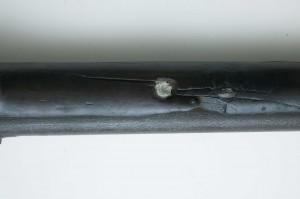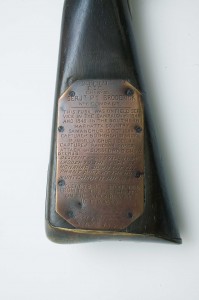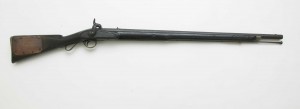An Indian veteran’s musket
Published in Artefacts, Issue 1 (January/February 2015), Volume 23From the 1770s onwards, as the laws restricting Catholic enlistment were relaxed, increasing numbers of Irishmen joined the British forces. Many enlisted in the European regiments of the East India Company (the British trading organisation that ruled India until 1858). The British needed increasing numbers of soldiers to acquire and maintain distant colonies, and Ireland was a major source of recruits. By the time of the census of 1831, 40% of the British Army was Irish. Irishmen serving in the East India Company’s army were paid more than soldiers in the regular army, receiving their wages in the Company’s own silver currency. They soldiered in élite European regiments, separate from the Indian or ‘sepoy’ units. Company officers, however, were considered to rank lower than their regular army equivalents.
Sergeant Patrick Broderick of the Bombay European Regiment carried this weapon, a muzzle-loading musket, in several long-forgotten battles in Marhatta in India. On one side you can see a bullet (right) that lodged in the musket, saving his life; on the other side a carved plaque (above) outlines the battles that Broderick and the weapon survived in 1844 and 1845. He donated the musket to the National Museum in 1890. The Bombay European Regiment was renamed the Royal Dublin Fusiliers in 1881 when the British Army was reformed and would serve in the Anglo-Boer War (1899–1902) and the First World War, before being disbanded in 1922.
 Lar Joye is curator of military history at the National Museum of Ireland (Decorative Arts).
Lar Joye is curator of military history at the National Museum of Ireland (Decorative Arts).
Further reading
H.E. Raugh, The Victorians at war, 1815–1914: an encyclopaedia of British military history (Santa Barbara, 2004).


















